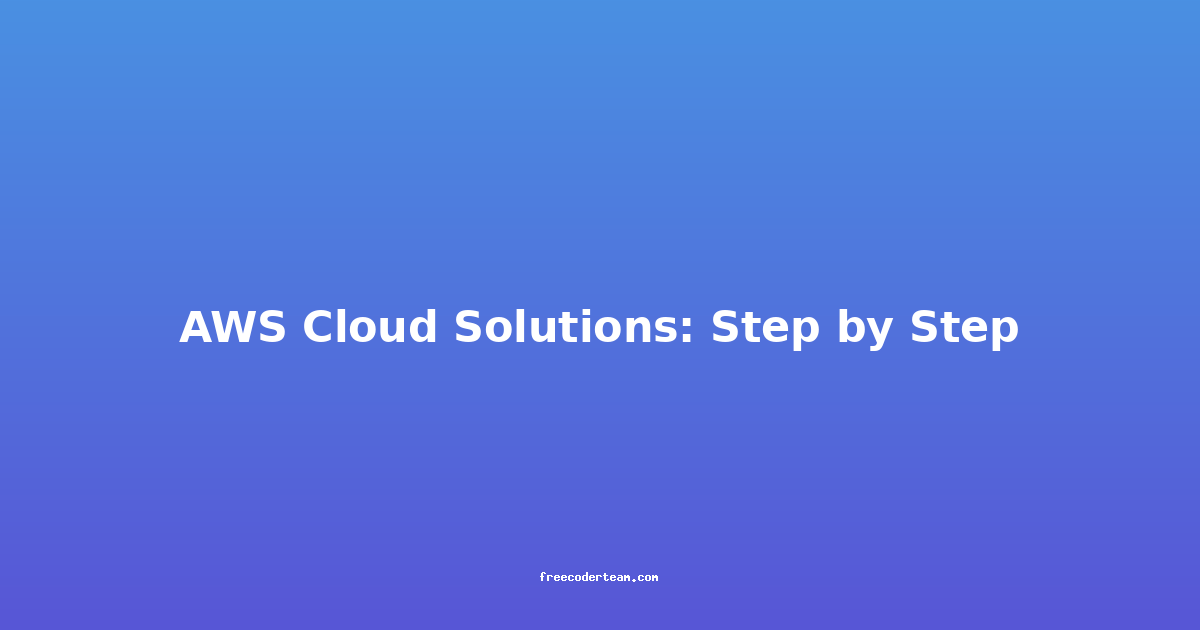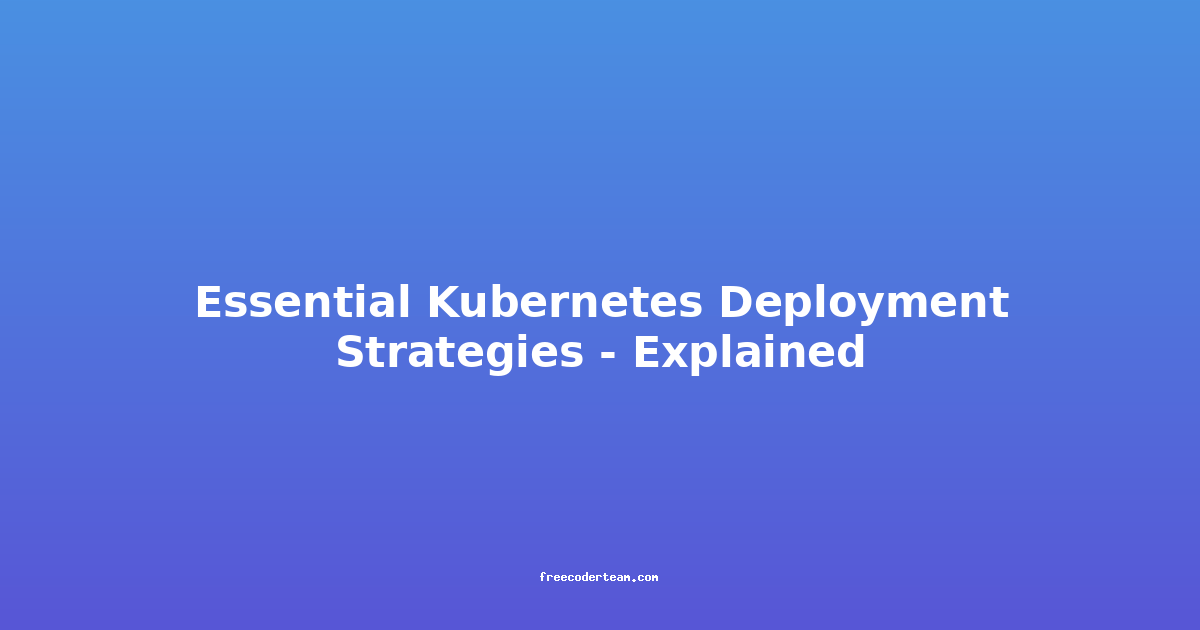Docker Container Management: Made Simple
Docker has revolutionized the way developers and IT professionals build, ship, and run applications. By packaging software into containers, Docker ensures that applications run consistently across different environments—whether it's development, testing, or production. However, managing Docker containers effectively is crucial to ensure optimal performance, scalability, and reliability.
In this comprehensive guide, we'll explore the nuances of Docker container management, covering best practices, practical examples, and actionable insights to help you streamline your container operations.
Table of Contents
- Understanding Docker Containers
- Key Components of Docker Container Management
- Best Practices for Docker Container Management
- Practical Examples
- Actionable Insights
- Conclusion
Understanding Docker Containers
Docker containers are lightweight, portable, and self-sufficient software units that encapsulate an application and all its dependencies. They run on a host machine using the same operating system as the host, but they are isolated from each other and from the host, ensuring a predictable environment.
Key advantages of Docker containers include:
- Portability: Containers can run on any system with Docker installed, eliminating "it works on my machine" issues.
- Scalability: Containers can be easily scaled up or down to handle varying workloads.
- Consistency: Containers ensure that applications behave the same way regardless of the environment.
Key Components of Docker Container Management
1. Docker Images
Docker images are the read-only templates used to create Docker containers. They contain all the necessary components required to run an application, including the application code, libraries, and dependencies.
Creating a Docker Image
To create a Docker image, you need a Dockerfile. Here's an example of a minimal Dockerfile for a Node.js application:
# Use a lightweight base image
FROM node:16-alpine
# Set the working directory in the container
WORKDIR /app
# Copy the application files
COPY package.json .
COPY package-lock.json .
RUN npm install
COPY . .
# Expose the port that the app runs on
EXPOSE 3000
# Command to run the application
CMD ["node", "app.js"]
To build the image, run:
docker build -t my-node-app .
2. Docker Containers
Containers are the runtime instances of Docker images. They are created, started, stopped, and managed using Docker commands.
Running a Container
To run a container from the previously built image, use:
docker run -d -p 3000:3000 --name my-node-app my-node-app
-d: Runs the container in detached mode (background).-p 3000:3000: Maps port 3000 of the container to port 3000 of the host.--name: Assigns a name to the container for easy reference.
3. Docker Networks
Docker networks enable communication between containers. By default, containers can communicate with each other on the same network.
Creating a Custom Network
You can create a custom network to isolate or group containers:
docker network create my-network
To attach containers to the network, use:
docker run -d --name db --network my-network mysql:latest
docker run -d --name app --network my-network my-node-app
4. Docker Volumes
Docker volumes provide persistent storage for containers, ensuring data survives even if the container is destroyed.
Creating a Volume
To create a volume and attach it to a container:
docker volume create my-data
docker run -d --name my-node-app -v my-data:/app/data my-node-app
The -v flag mounts the my-data volume to the /app/data directory inside the container.
Best Practices for Docker Container Management
1. Use Lightweight Base Images
Choose lightweight base images (e.g., Alpine Linux) to reduce the size of your Docker images and improve performance.
# Lightweight base image
FROM alpine:3.15
2. Keep Containers Single-Purpose
Each container should have a single responsibility. Avoid running multiple services within a single container, as this violates the principle of separation of concerns.
3. Automate Container Updates
Regularly update your base images and dependencies to address security vulnerabilities and bugs. Use tools like docker-compose or container orchestration platforms like Kubernetes for automation.
4. Monitor and Log Effectively
Monitor container health and logs to detect issues early. Use tools like Docker's built-in logging or integrate with external logging solutions like ELK Stack or Splunk.
# Monitor container logs
docker logs my-node-app
Practical Examples
Example 1: Running a Simple Web Application
Let's run a basic Node.js web server using Docker.
-
Create the Application
// app.js const http = require('http'); const server = http.createServer((req, res) => { res.end('Hello, Docker!'); }); server.listen(3000, () => { console.log('Server is running on port 3000'); }); -
Create the Dockerfile
FROM node:16-alpine WORKDIR /app COPY . . EXPOSE 3000 CMD ["node", "app.js"] -
Build and Run the Container
docker build -t my-node-app . docker run -d -p 3000:3000 --name my-node-app my-node-app -
Test the Application Open a browser and navigate to
http://localhost:3000. You should see "Hello, Docker!"
Example 2: Managing Container State and Lifecycle
Docker provides commands to manage the lifecycle of containers.
-
List Running Containers
docker ps -
Stop a Container
docker stop my-node-app -
Remove a Container
docker rm my-node-app -
Restart a Container
docker restart my-node-app -
Inspect a Container
docker inspect my-node-app
Actionable Insights
Container Orchestration Tools
For managing multiple containers and scaling applications, consider using orchestration tools like:
- Docker Compose: Ideal for local development and small-scale deployments.
- Kubernetes: A robust, enterprise-grade platform for managing containerized applications at scale.
Example with Docker Compose
Create a docker-compose.yml file:
version: '3.8'
services:
web:
image: my-node-app
ports:
- "3000:3000"
volumes:
- .:/app
networks:
- my-network
db:
image: mysql:latest
networks:
- my-network
networks:
my-network:
Run the application:
docker-compose up -d
Security Considerations
- Use Official Images: Stick to official Docker images to reduce the risk of vulnerabilities.
- Scan Images for Vulnerabilities: Use tools like Docker Content Trust or
trivyto scan images for security issues. - Limit Privileges: Run containers with the
--privilegedflag only when necessary.
Conclusion
Docker container management is a critical skill for modern software development and operations. By understanding the key components (images, containers, networks, and volumes) and following best practices, you can streamline your container workflows and ensure applications run smoothly.
Remember to:
- Use lightweight base images.
- Keep containers single-purpose.
- Automate updates and monitoring.
- Leverage container orchestration tools for scalability.
With these practices and practical examples, you're well-equipped to manage Docker containers effectively and harness their full potential. Happy containerizing! 😊
If you have any questions or need further clarification, feel free to reach out!




